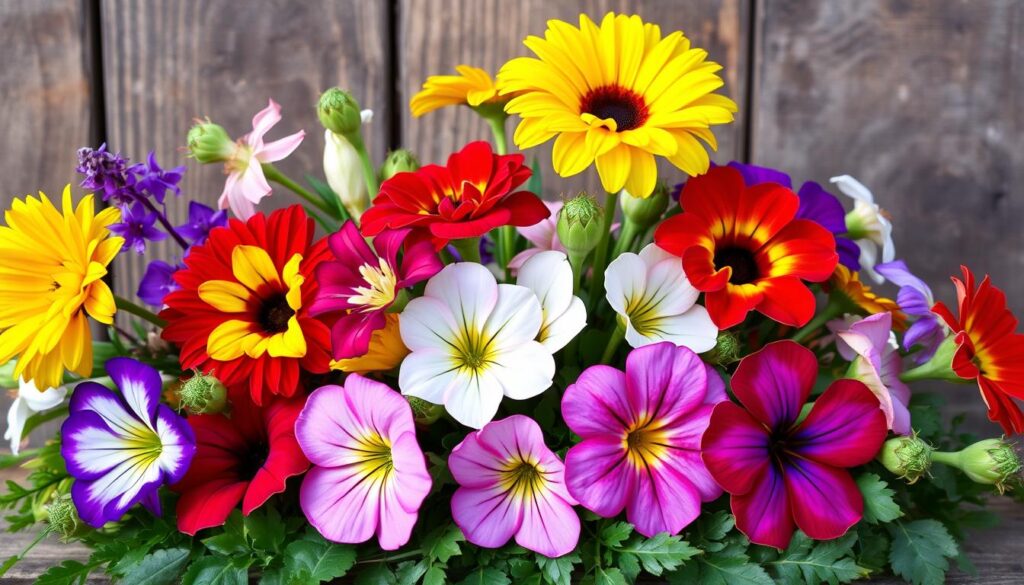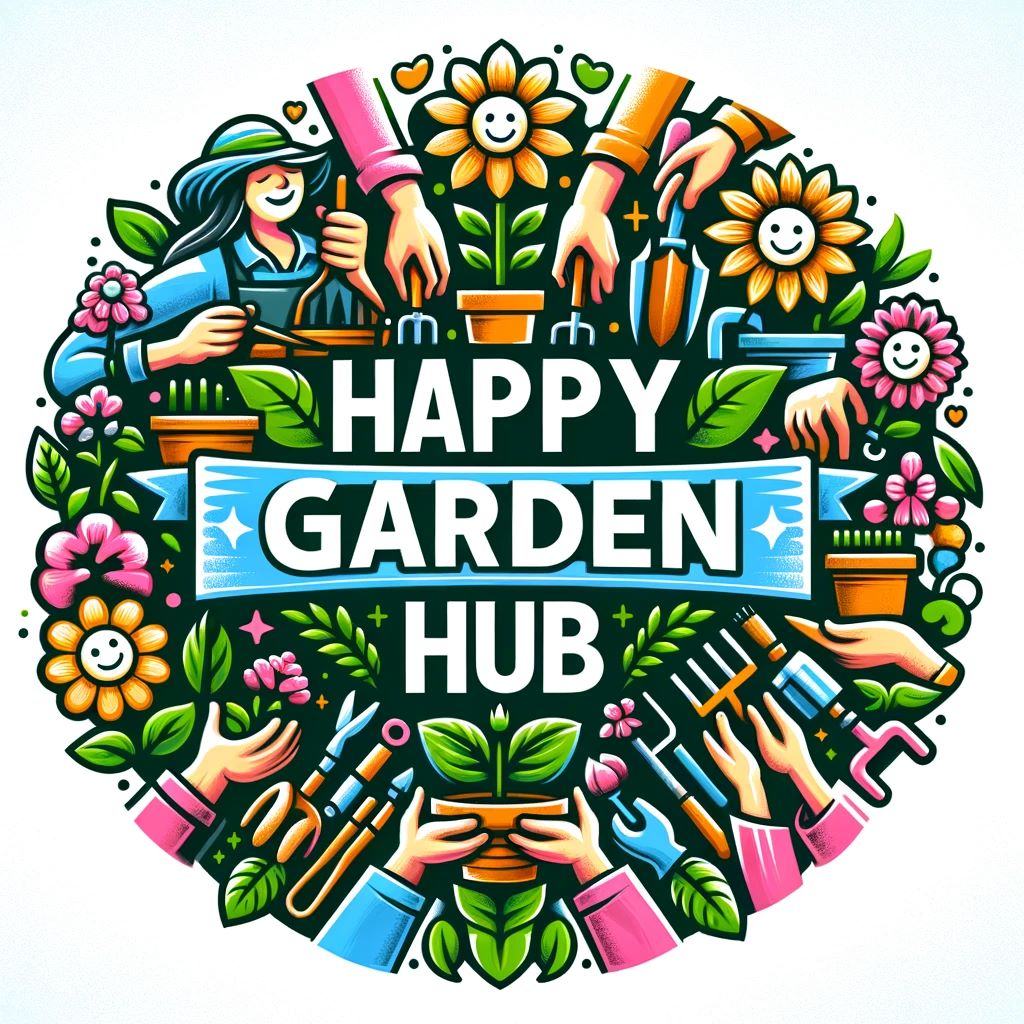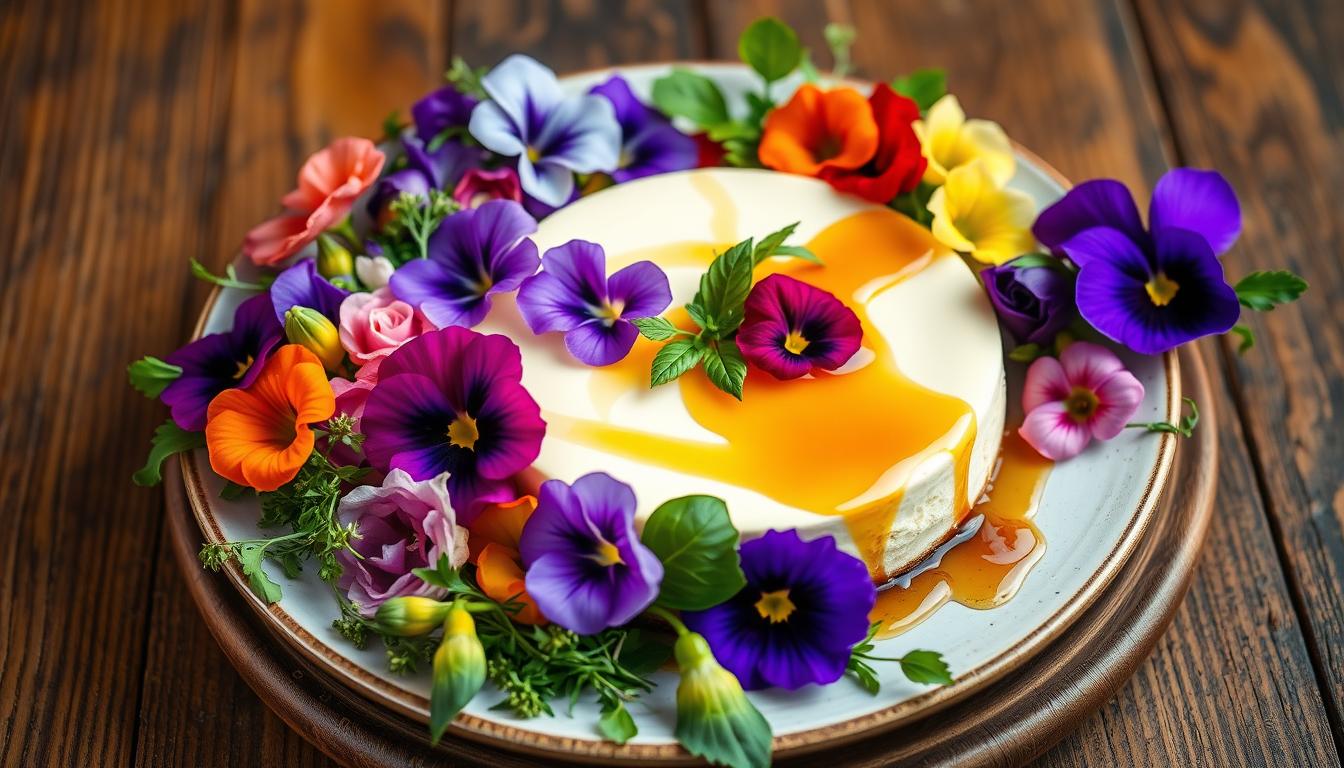This post contains affiliate links.
Ever wondered how to make your meals pop with color and flavor? Look no further than your garden! Edible flowers have been nature’s secret ingredient for centuries. They transform ordinary dishes into extraordinary feasts for both the eyes and taste buds.
You might think floral garnishes are just for fancy restaurants. But culinary flowers are making their way into home kitchens too. From the delicate petals of roses to the peppery punch of nasturtiums, these blooms are more than just pretty faces.
Chefs like René Redzepi of Noma have long embraced edible flowers in their creations. Now, entrepreneurs like Loria Stern are taking it mainstream with her “Eat Your Flowers” business. She showed on Shark Tank how versatile these colorful ingredients can be.
But before you start munching on your bouquet, remember: not all flowers are created equal. While carnations and hibiscus are safe bets, azaleas and daffodils are definite no-nos. Always double-check before you nibble, and skip any blooms that might’ve had a pesticide shower.
Key Takeaways
- Edible flowers add unique flavors and visual appeal to dishes.
- Popular culinary flowers include roses, lavender, and nasturtiums.
- Always verify a flower’s edibility before consuming.
- Harvest flowers in the morning when they’re just opening for best flavor.
- Organic or home-grown flowers are safest for consumption.
- Flowers can be preserved in vinegars or frozen in ice cubes for drinks.
- Allergy-prone individuals should consult a doctor before trying edible flowers.
A Blossoming Trend: The Rise of Edible Flowers in Cuisine
Edible flowers are becoming more popular, making dishes colorful and beautiful. They are used in fancy meals and simple home dishes. This trend is growing because of veganism, eating seasonally, and supporting local farmers.
Social media has helped show how to use edible flowers in cooking. Chefs use these delicate ingredients to make dishes special. They add beauty and flavor to everything from drinks to desserts.
Innovative culinary techniques include:
- Floral toasts for Instagram-worthy breakfasts
- Chic salads bursting with petal power
- Scented creams for dessert delights
- Blossom-infused cocktails and mocktails
Companies like Fine Food Specialist and Westlands UK meet the demand for edible flowers. Restaurants like Carters of Moseley and Floral lead the way, using flowers in their dishes.
“Edible flowers offer a unique opportunity to educate kitchen staff and add versatility to dishes,” says a renowned chef. “From blossoms to leaves, every part of the plant can enhance the dining experience.”
Popular edible blooms include violas, pansies, and nasturtiums. Chefs suggest tasting flowers before using them in dishes. They pair well with both sweet and savory foods. Items like marigold butters and dandelion ice cream are changing the way we eat.
| Edible Flower | Flavor Profile | Culinary Use |
|---|---|---|
| Nasturtium | Peppery | Salads, Garnishes |
| Lavender | Floral, Sweet | Desserts, Teas |
| Hibiscus | Tart, Cranberry-like | Beverages, Sauces |
| Marigold | Citrusy | Butters, Garnishes |
Edible Flowers: Nature’s Colorful and Flavorful Gift
Imagine adding vibrant petals to your salad or garnishing a cocktail with delicate blossoms. Welcome to the world of edible flowers! These colorful culinary delights are nature’s gift to your taste buds, offering a unique blend of flavors and visual appeal.
Defining Edible Flowers
Edible flowers are blooms that are safe to eat and add a special touch to your dishes. From edible petals to flowering herbs, these natural wonders come in a variety of flavors. You’ll find mild cucumber tastes in borage, peppery kicks from nasturtiums, and sweet notes in violets. With over 150 edible rose varieties, you’re spoiled for choice!

Historical Use of Flowers in Cooking
Flowers have been part of culinary traditions for centuries. Ancient Romans loved using roses in their cooking and wine-making. Today, this floral legacy continues with a modern twist. You can explore the joys of flower gardening and grow your own edible blooms at home.
Modern Culinary Applications
In today’s kitchens, edible flowers shine in various ways. Use them as eye-catching garnishes, infuse them into syrups, or create unique blossom seasonings. Here’s a taste of what you can do:
- Sprinkle marigold petals in salads for a zingy, citrusy kick
- Brew a soothing cup of lavender tea
- Decorate cupcakes with pretty pansies
- Add a peppery punch to sandwiches with nasturtium flowers
With edible flowers, your culinary creativity knows no bounds. So go ahead, let your dishes bloom with flavor and color!
The Nutritional Powerhouse of Petal Consumption
Edible flowers are more than just pretty garnishes. They are packed with nutrients that can boost your health. These colorful blooms offer a range of floral nutrients.
Nasturtiums have 10 times more vitamin C than lettuce. Marigolds and nasturtiums have more lutein and zeaxanthin than kale and spinach. These facts show the hidden power of edible flowers.
Let’s explore the nutritional benefits of some popular blooms:
- Violets and violas: Rich in rutin, supporting blood vessel health
- Pansies: Packed with polyphenols for antioxidant support
- Chamomile and California poppies: Natural stress-relievers and sleep aids
- Calendula and lavender: Possess skin-healing properties
- Fuchsias: High in vitamin C and antioxidants
- Basil blooms: Aid digestion and offer medicinal benefits
- Yarrow flowers: Powerful wound-healing properties
Edible flowers can boost your immune system and calm your nerves. Next time you add them to a salad or cocktail, remember you’re not just adding beauty. You’re also serving up a dose of nature’s most colorful vitamins!
“Let food be thy medicine and medicine be thy food” – Hippocrates
This ancient wisdom is especially true for edible flowers. By adding these floral delights to your diet, you’re not just following a trend. You’re embracing a nutritious, natural way to enhance your health and please your palate.
Top 10 Most Popular Edible Flowers for Your Kitchen
Ready to add color and flavor to your dishes? Explore the world of edible flower varieties that can take your cooking to new heights. From delicate petals to vibrant blooms, these flowers will make your dishes stand out.

Roses: The Queen of Edible Blooms
Roses are more than just a Valentine’s Day gift. They add a sweet, perfumed flavor to your food. Use rose petals on salads or make a fragrant syrup for cocktails.
Lavender: A Fragrant Culinary Delight
Lavender adds a sweet, floral taste to your dishes. It’s great for infusing honey or adding to baked goods. Plus, it can help with digestion and sleep.
Nasturtiums: Peppery Pops of Color
Spice up your meals with nasturtiums! They have a peppery kick like watercress. Rich in vitamin C, they’re perfect for garnishing salads and appetizers.
Pansies: Delicate Beauty on Your Plate
Pansies add elegance to any dish. Their sweet to grassy taste is great with desserts and salads. Plus, they’re full of vitamins A and C.
Hibiscus: Tart and Tangy Tropical Flair
Try hibiscus for a tropical taste. Its tart flavor is perfect in teas and cocktails. It’s also high in vitamin C and might lower blood pressure.
| Edible Flower | Flavor Profile | Culinary Uses |
|---|---|---|
| Marigolds | Bitter and sweet | Garnishes, salads |
| Chamomile | Sweet with apple aroma | Teas, desserts |
| Borage | Crisp cucumber | Salads, cocktails |
| Calendula | Slightly medicinal | Soups, rice dishes |
| Violets | Subtle, sweet floral | Candied treats, desserts |
Try these floral ingredients to add a unique touch to your cooking. Make sure to get your edible flowers from trusted sources or grow them yourself for safety.
From Garden to Plate: Growing Your Own Edible Flowers
Ready to dive into edible flower gardening? You’re in for a treat! Growing your own culinary flowers is a delightful way to add color and flavor to your meals. Let’s explore how you can start your journey into homegrown edible blooms.
First things first, choose your flowers wisely. Nasturtiums, pansies, and marigolds are fantastic options for beginners. They’re easy to grow and versatile in the kitchen. Plus, they’re stunning additions to any garden!
When it comes to culinary flower cultivation, organic is the way to go. Skip the pesticides and let nature do its thing. Your taste buds will thank you later. Remember, the best time to harvest is in the morning after the dew has dried but before the sun gets too strong. This ensures maximum flavor in your blooms.
Edible Flower Garden Varieties
Want to create a diverse edible flower garden? Here’s a list of tasty options to consider:
- Bee balm (bergamot) – perfect for perennial borders
- Calendula – adds a pop of orange to salads
- Roses – the queen of edible flowers
- Chive blossoms – mild onion flavor
- Lavender – lovely in desserts and teas
Don’t forget about flowering herbs and veggies! Arugula, broccoli, and fennel flowers are all edible and pack a flavorful punch. And here’s a fun fact: many edible flowers self-seed, making your gardening job easier year after year.
| Flower | Flavor Profile | Culinary Use |
|---|---|---|
| Nasturtium | Peppery | Salads, garnishes |
| Pansy | Mild, lettuce-like | Dessert decorations |
| Borage | Cucumber-like | Cocktails, frozen in ice cubes |
| Basil flowers | Mild basil | Pasta, pesto, soups |
With these tips, you’re all set to start your edible flower gardening adventure. Happy planting, and even happier eating!
Safety First: Identifying and Harvesting Edible Flowers
Exploring edible flowers can be thrilling, but safety comes first. Start by identifying flowers correctly to avoid picking harmful ones.
Proper Identification Techniques
Knowing your edible blooms is essential. Use a reliable guidebook or ask local experts. Remember, not all flowers on Instagram are safe to eat!
Best Practices for Harvesting
Harvesting edible blooms needs care. Pick from your garden or trusted organic places. Stay away from roadside or industrial area flowers. Choose healthy flowers without spots or pests.
Avoiding Common Pitfalls and Poisonous Look-alikes
Watch out for look-alikes! Some toxic flowers look like safe ones. If unsure, don’t eat it. Stick to known edible flowers like hibiscus and nasturtium. Always rinse flowers gently under cold water before using.
“If you can’t identify it with 100% certainty, leave it be. Your taste buds aren’t worth the risk!”
Remember, safety is key when using edible flowers. With the right knowledge and care, you’ll soon be decorating your dishes with beautiful blooms!
Culinary Creativity: Innovative Ways to Use Edible Flowers
Ready to add some floral magic to your meals? Edible flowers offer endless possibilities in the kitchen. They can turn any dish into a masterpiece, from appetizers to desserts.
Explore exciting edible flower recipes that will delight your taste buds. Imagine enjoying Pansy Topped Shortbread Cookies or sipping Honeysuckle Vodka Lemonade. These dishes are not just beautiful; they’re a treat for all your senses!
For a burst of spring, try a Spring Salad with Edible Flowers. Add pansies, violets, and daisies for color and fresh flavors. Or, impress your guests with Edible Flower Ice Cubes in their drinks. It’s a sure way to start a conversation!
Want to try something new? Make a Vanilla Bean Chamomile Cake or Blueberry Lemon Curd Pop Tarts with pressed flowers. These dishes are not only tasty; they’re also perfect for Instagram!
“Flowers can be infused into liquids or sugar to add flavor to baking, such as chamomile, elderflower, and roses for liquid infusion.”
Don’t forget about drinks! Try a Hibiscus Iced Latte or Grapefruit Blossom Pot de Creme. With so many edible flowers to choose from, your creativity knows no bounds. So, let your dishes bloom with flavor!
Floral Infusions: Elevating Beverages with Edible Blossoms
Ready to take your drinks to the next level? Floral beverages are blooming everywhere, from craft breweries to trendy cocktail bars. Let’s dive into the world of edible flower drinks and discover how you can create your own floral infusions at home!
Floral Teas and Tisanes
Blooming teas offer a delightful array of flavors and health benefits. Chamomile, lavender, rose petal, and hibiscus are popular choices for floral infusions. These fragrant brews not only tantalize your taste buds but also provide a visual feast as they unfurl in your cup.
Cocktails and Mocktails with a Flowery Twist
Floral cocktails are gaining popularity, blending vibrant flower notes with premium spirits. Mixologists are getting creative, using edible blossoms to craft masterpieces that are as beautiful as they are delicious. Don’t be surprised to find your Instagram feed filled with these picture-perfect drinks!
Infused Waters and Syrups
For a refreshing non-alcoholic option, try infusing water with roses, lavender, or elderflower. These subtle floral beverages are perfect for hot summer days. You can also create floral syrups to add a sweet, aromatic touch to your favorite drinks.
| Flower | Flavor Profile | Best Used In |
|---|---|---|
| Rose | Sweet, floral | Teas, cocktails, syrups |
| Lavender | Fragrant, slightly sweet | Lemonades, iced teas, cocktails |
| Hibiscus | Tart, cranberry-like | Iced teas, mocktails, syrups |
| Elderflower | Light, honey-like | Champagne cocktails, syrups |
Remember, when using edible flowers in your drinks, always ensure they’re safe for consumption and free from pesticides. With a little creativity, you’ll be whipping up stunning floral beverages in no time!
Preserving the Beauty: Methods for Storing Edible Flowers
Ready to keep your floral culinary creations fresh and fabulous? Let’s explore how to store edible flowers! With the right methods, you can make these delicate beauties last up to two weeks. Imagine having a fridge full of nature’s confetti, ready to add color to your dishes anytime!
For short-term storage, try the “spa treatment” method. Place your flower stems in water, then put them in a loose plastic bag. Store them in the fridge. If they start to wilt, a quick 10-minute dip in ice water can revive them. For longer storage, wrap them in damp paper towels and keep them in an airtight container. It’s like giving your flowers a cozy, moist bed.
Want to preserve your flowers for a long time? Drying is the way to go. In sunny Perth, Australia, flowers dry naturally in just a couple of days. For others, oven drying at 40-50°C for 4-6 hours works well. Once dried, these flowers can last months. Use them in teas, infused oils, or as a unique cocktail garnish. With these techniques, you’ll be a pro at storing edible flowers and adding color to your meals all year!
FAQ
What are edible flowers?
What are some popular edible flowers?
Are edible flowers nutritious?
How can I grow my own edible flowers?
How do I identify and safely harvest edible flowers?
How can I use edible flowers in cooking?
How can I incorporate edible flowers into beverages?
How can I store edible flowers?
This post contains affiliate links.

